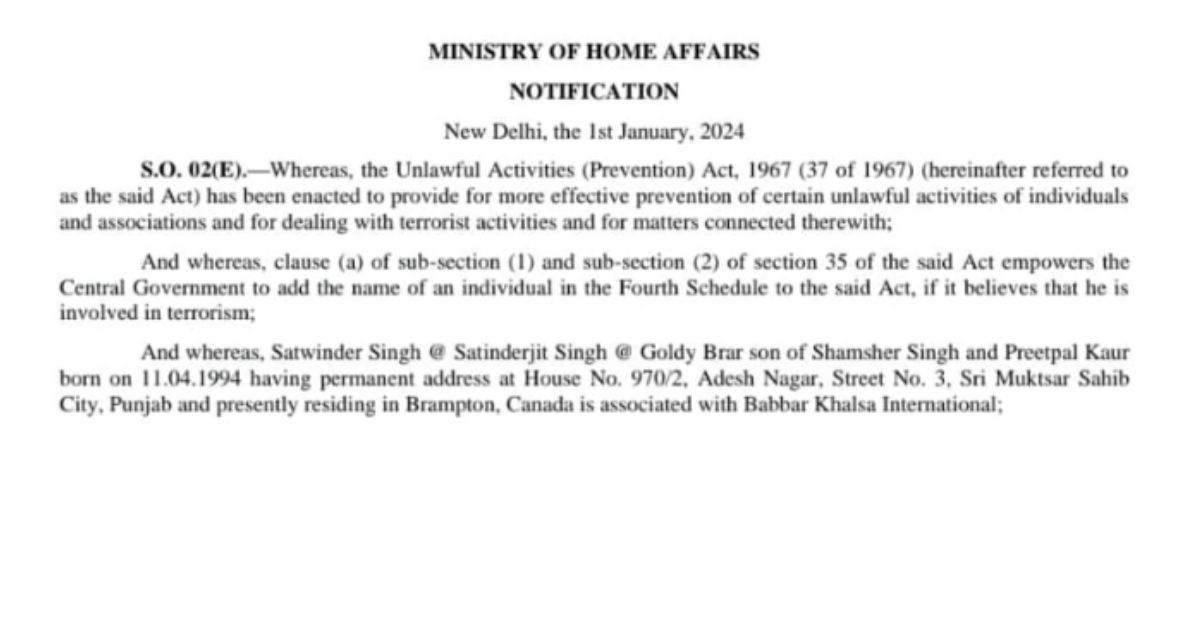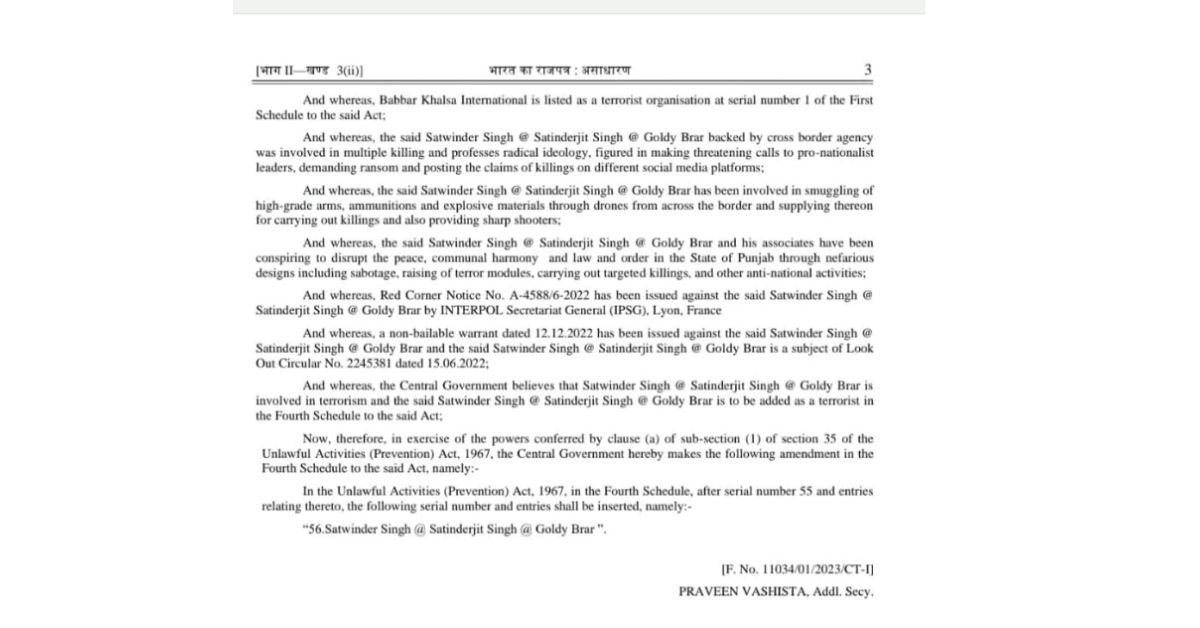In a significant move, the Ministry of Home Affairs (MHA) of India has recently marked a new chapter in its fight against terrorism and organized crime. The MHA declared Satwinder Singh, better known as Goldy Brar, a terrorist under the stringent Unlawful Activities (Prevention) Act, of 1967. This declaration is not just a mere addition to the list of criminals but unfolds a narrative deeply intertwined with cross-border terrorism, radical ideologies, and high-profile murders.
MHA declares Canada-based absconding gangster Goldy Brar a terrorist under UAPA
Read @ANI Story | https://t.co/wBE53MlzH5#MHA #UAPA #GoldyBrar pic.twitter.com/wzbiTkpeEF
— ANI Digital (@ani_digital) January 1, 2024
Who is Goldy Brar?
Goldy Brar, a name that has been making headlines, is infamously recognized as the prime accused in the assassination of the renowned Punjabi singer Sidhu Moose Wala. The murder, which sent shockwaves through the music industry and among fans worldwide, occurred in the Mansa district last year. The Punjab police, in their investigation, pinpointed Brar as the mastermind behind this high-profile killing.
The Cross-Border Link and Radical Ideologies
The story of Goldy Brar is not confined within the borders of India. Residing in Brampton, Canada, Brar’s alleged involvement extends beyond typical gang rivalries. According to the MHA, he is backed by cross-border agencies and has been implicated in multiple killings. His activities go beyond the realm of organized crime and venture into the territory of radical ideologies and terrorism.
Connection with Babbar Khalsa International
Further complicating the narrative is Brar’s association with the banned terror group Babbar Khalsa International. This connection points towards a larger, more ominous network of terrorism that operates beyond the purview of petty criminal endeavors. It highlights a dangerous liaison between organized crime and terrorist outfits, which poses a significant threat to national security.
Social Media: A Tool for Terror
In today’s digital age, social media platforms have become powerful tools for spreading ideologies and claims. Goldy Brar reportedly used these platforms not just for making threatening calls to pro-nationalist leaders but also for demanding ransom. Perhaps more chillingly, he used social media to post claims of killings, showcasing a grim blend of technology and terrorism.
The Impact of the MHA’s Declaration
By declaring Goldy Brar a terrorist under the UAPA, the MHA has not only heightened the seriousness of his crimes but also set a precedent in tackling criminals who pose a threat to national security. This move is a part of the government’s broader strategy to combat terrorism and radicalization, ensuring that individuals involved in such heinous acts are brought to justice, regardless of where they might be located.


Read more articles
- New Twist in Moosewala Murder Case: Lawyers Seek Discharge of Bishnoi and Bhagwanpuria Amidst Conflicting Claims
- The Wealthy Spinner: Ravi Bishnoi Net Worth In The Spotlight!!
Conclusion
The declaration of Goldy Brar as a terrorist is more than just a legal designation; it is a statement against the intertwining of organized crime, radical ideologies, and terrorism. It reflects the government’s unwavering stance on national security and its commitment to maintaining peace and order. As this situation continues to unfold, it serves as a reminder of the ongoing battle against forces that seek to destabilize societies and spread terror.
This development is not just a matter of law enforcement but also serves as a stern warning to those who engage in activities that threaten the peace and security of nations. The case of Goldy Brar is a testament to the complexities of modern-day crime and terrorism and the relentless efforts of governments worldwide to combat these challenges


https://t.me/s/iGaming_live/4864
https://t.me/s/officials_pokerdom/4017
https://t.me/officials_pokerdom/3199
https://t.me/iGaming_live/4869
https://t.me/dragon_money_mani/14